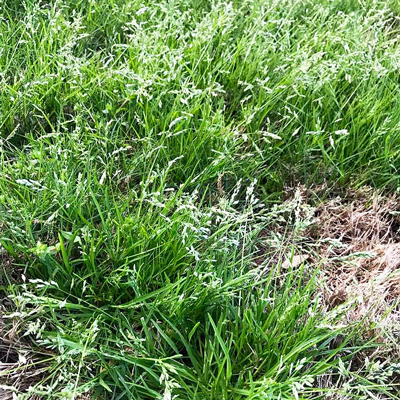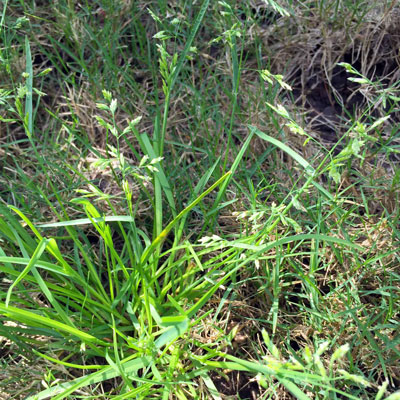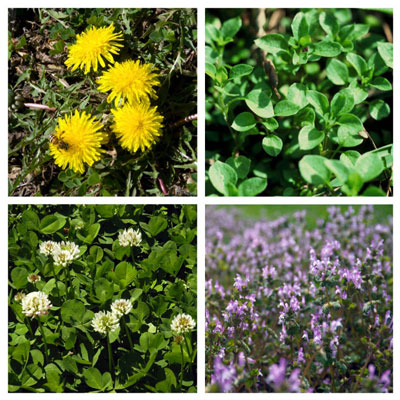You Get One Chance!
(In case you haven’t noticed, the key words that I’m using to highlight the message this year are “one chance.” I hope it helps!)
There is no product you can use to eliminate these winter grasses once they start growing in your lawn.
You get only one chance each year to avoid annual bluegrass (Poa annua), rescuegrass and ryegrass, and that time is here now through Labor Day.


Here are the facts, pure and simple…
• Cool-season annual weeds germinate with the first cold front and rain in September.
• Cool-season annual grasses include annual bluegrass (Poa annua), rescuegrass and ryegrass.
• Once these germinate and start growing, you have no way to eliminate them. You’ve blown it for another entire year.
• “Pre-emergent” granules kill the germinating seeds before they can establish and make viable plants. They are your only option in lawns.
• Three common products are Dimension, Halts and Balan. They will likely be labeled as “crabgrass preventers.” That’s how we use them in the spring. Don’t let that confuse you. It’s the same products, except you need two applications in the spring and you only need one for the winter weeds.
• These materials are safe for use around trees and shrubs, but you still must read and follow label directions. (Just like you always do, right?)
• Do not apply to new lawns until they have been through their first winters. Do not apply if you intend to overseed with ryegrass.
• Timing: August 25 through Labor Day. Want to apply it now while you’re thinking about it? Go for it. It’s better to be a few days earlier than necessary than to be a day or two too late. But this is your one chance!
• Mow the lawn, then apply the granules and water moderately to settle them onto the soil surface.
For broadleafed weeds…
• There are also cool-season weeds that are not grasses. We classify them as “broadleafed weeds.”
• That list includes clover, dandelions, henbit and chickweed.

• These weeds can be controlled by application of Gallery pre-emergent granules, also in the same time period of the last week of August and the first week of September.
• You cannot mix the two types of pre-emergents in your fertilizer hopper. You must make two separate passes over your lawn, then water moderately.
• With broadleafed weeds you do get a second chance. You can apply a broadleafed weedkiller containing 2, 4-D to actively growing weeds late in the fall or as they’re gearing up in very early spring. Read and follow label directions carefully to avoid damage to desirable plants.
If you hire a lawn care service…
This is an important note. These companies have many customers. They can’t be on all customers’ lawns on the same day “just because Neil says that’s the perfect time to do something.” I certainly do understand that, and I hope their customers will, too. They have access to different products than we consumers do, and you are hiring them for results. If they say that they can deliver the desired results using a different schedule, and if reviews and reports from people you know concur, then trust them until they prove otherwise. These guidelines are intended for homeowners who do their own lawn care.
